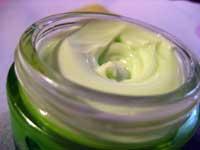Science in wildcard advertising

To draw attention to the public, ad messages often appear related to scientific topics. In fact, there would be no problem if the ads were properly used for scientific topics. In short, it is true that many of the products they advertise have been developed thanks to the advances made in different fields of science and technology: new characteristics of cars, creams anti-wrinkles, microorganisms that incorporate certain dairy products, for example.
But there are problems with how advertising uses science. When talking about scientific issues, they seem to explain the details of the products being advertised. On many occasions, however, they only resort to science to increase its credibility, to protect it in the supposed reputation of science. As if science had an absolute and indisputable truth.
Harnessing the power of science
Advertisers try to provide information that we consider reliable and that is why they use this way, as they have concluded in a study conducted in this regard at the University of Alcalá of Madrid. In fact, on the market there are different varieties of each product, and consumers rely on advertising to choose the most suitable version from among all available.
"It's not magic, it's science," says the announcement of a prestigious brand of shampoo that can be seen lately on television. Point. They give no further explanation. If it is science it has sufficient guarantees. It cannot be questioned.

On other occasions, advertisements try to provide a scientific basis for the product they have for sale, in order to make it more reliable among consumers. Sometimes, however, the concepts they use cannot be considered scientific. To say that the molecules of this type of cream ingest the fat that we have stored in the body or that this type of cereals provide us with healthy energy does not indicate anything reasonable. Molecules have no capacity to swallow anything. And energy is energy, there is no healthier energy than others.
Sometimes, ads resort to particularly complex explanations. Very few people are able to understand what is said in certain ads. For example, the announcement of a cream that helps skin cells survive longer says it has the ability to do sirt-activating and speeds up sirtuins.
According to researchers at the University of Alcalá, the aim of these ads is to make viewers aware of the impossibility of their functioning. Thus, the feeling they want to create in the public is the complexity of the product they have in sight. After that they want to convey an idea: if it is complex, it is very useful.
It is true that it is very difficult to explain comprehensively the operation of a product through very short advertisements. For example, to understand the activity of cosmetics it is necessary to have a minimum of knowledge in biochemistry.
Advertisers know that well and yet use it. Without analyzing whether it is lawful or not, it is clear that going that way is effective and profitable to them; if it were not so, they would have abandoned it long ago...
Published in Ortzadar
Buletina
Bidali zure helbide elektronikoa eta jaso asteroko buletina zure sarrera-ontzian











